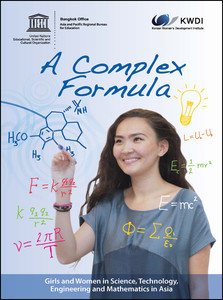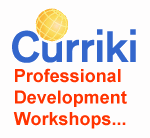By Curriki Guest Blogger Julie Petersen 
Who thought that your education wouldn’t be based solely upon studying and exams? When you decided to pursue a degree, you didn’t expect to spend much of your time on essays, research papers, case studies, and other types of academic papers. Nevertheless, every student is expected to improve his writing skills throughout the educational journey.
Why do professors consider these projects to be so important? Believe it or not, they don’t assign several tasks with the mere intention to torture you. The academic writing practice develops your ability to express your mind, analyze academic and scientific materials, and provide your own arguments supported by facts. These skills are essential for any career you are focused on.
However, you are hardly relieved by the realization that essays are important. You need practical advice that will help you move forward and complete the assignments with success. In the continuation, you will find EdTech tools that will help you do that!
- Writing.com
When you need someone to support you throughout the writing process with the right tips and constructive feedback, then this is the website you should turn to. Writing.com is a community for writers, but you don’t have to be a professional author to create your online writing portfolio and become part of the platform. In addition to the numerous writing tools, you will get access to great contests that will inspire you to discover your creative voice.
- NovelGuide.com
Are you stuck with a project for your literature class? You’ll probably find the needed resources at this website. NovelGuide offers plot summaries on most novels that are part of the curriculum in high schools and colleges. You will also benefit from the Discussion & Question section available for each book featured at the website.
- TeenInk.com
What could be more motivational than an actual paper written by a student? Inspiration can come from anywhere: life occurrences, books, websites, school environment, famous personalities, and much more. The essays featured at this website can serve as an example of creative writing in its best light.
- Essaymama.com
This is the online tool that will get you out of the most difficult situations. When you have a close deadline to meet, but you are nowhere near a finished paper, you can rely on the assistance by the writers and tutors at this website. You can get help with virtually any type of paper, regardless of its topic. The team of writers includes experts from several areas of study. Thus, EssayMama can provide you with a piece of advice that will help to complete any academic project, but you’ll also get a valuable lesson on essay writing along the way. The blog section of the website is worthy of attention; check for regular updates with news, infographics and tips regarding academic writing.
- Essay Map
When you have a successful plan, even the most complex project will be simple to complete. This online tool will help you stay on track throughout the development of the content. You can use the online version of the tool to create the map, but you can also print the blank map and fill in the blanks if that works for you.
- Persuasive Essay Thesis Builder & Online Outliner
Let’s simplify the name of this tool; we’ll call it Thesis Builder because that’s its main function. If you don’t have a solid thesis statement for your essay, you cannot proceed with the process until you develop one. This automated tool instructs you to provide the topic of the paper, your main opinions and supporting arguments. Then, it will produce a thesis statement that you can edit or simply paste in your document.
- EasyPunch.com
You have troubles organizing your ideas and expressing them in clear academic writing style? Essay Punch will take you through each step of the writing process. You can use pre-set prompts for descriptive, persuasive, and informative essays. Then, you can proceed with online interactive exercises that will help you become a better writer through regular practice.
- TheEasyEssay.com
This is an instant organization program that brings the writing process down to its foundation. The system works for students at any age. It enables you to organize a basic 5-paragraph paper, but you can also expand that structure to a more complex essay of 17 paragraphs. Once you start using this tool, you will boost your communication skills without even noticing.
- HemingwayApp.com
When you present a paper with complex structure and lengthy arguments, you expect to impress your professor. That strategy backfires in most cases. Street language is not acceptable in an academic paper, but that doesn’t mean you should write unreadable content that wouldn’t convey a clear message. Hemingway App is a tool that will help you make your paper bold and clear by simplifying the words and sentences. In addition to dense and complicated sentences, the tool will also highlight adverbs, passive voice, and words or phrases that could use some editing.
- Read-Able.com
This tool offers a quick and easy way to test how readable your paper is. You don’t want to confuse your teacher with a paper that would consume a lot of his time. With this flexible readability software, you will make sure that the essay you are about to submit is appropriate for your grade level.
Academic writing is not as scary as it seems. Even the most intriguing assignments can be made simpler when you have the right educational tools on your side. Start exploring the above-listed tools and you’ll notice how your writing skills are improving by the day.
Julie Petersen is a tutor and a blogger, who features the latest career and educational trends in her articles. At present time she is working on her first ebook dedicated to online learning. You may see Julie’s latest publications and contact her via Linkedin or Google+ page.






















